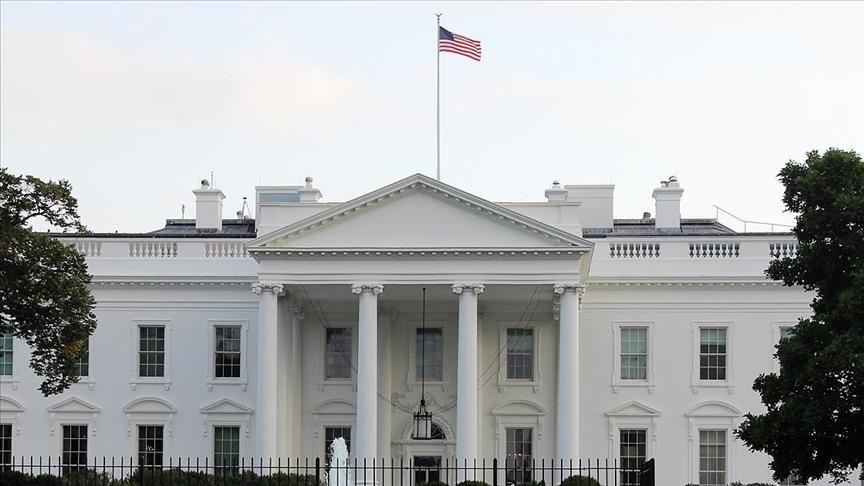The decision to pause the approval of LNG export projects in the US, the largest liquefied natural gas (LNG) exporter to global markets, is not expected to immediately impact supplies worldwide.
US President Joe Biden announced the administration’s decision on Jan. 26 to temporarily pause all pending approvals of LNG exports amid climate change concerns.
Biden said his administration would study the impacts of LNG exports on energy costs, the country’s energy security and the environment during this pause.
The president added that the pause excludes 'unanticipated and immediate' national security emergencies.
This decision comes at a time when the US has a substantial slice of Europe’s LNG market, having suppled 64% of the LNG it produced to Europe last year.
However, Alex Froley, an LNG market analyst at ICIS, the world’s largest petrochemical market information provider, told Anadolu that the decision will not have any immediate threat to supply because the approvals relate to new projects that will take around three years to build.
The biggest project that will be affected by the decision is Venture Global's planned second project of 20 million tonnes of LNG per year at Calcasieu Pass, CP2, in Louisiana, which needs approval, Froley said.
He clarified that if approval is granted soon, the project could be completed in three years and new supplies would be ready in 2027; however, this has since been postponed.
Germany's ENBW and SEFE are two companies in Europe that will be affected as they both had LNG contracts with CP2. Froley said the delay will also impact Chinese and Japanese companies that have deals with CP2.
Taking into account the delays of at least a year in projects, he said the industry's trajectory will become more apparent following the US elections this year.
Nonetheless, he said a large wave of new projects in the US, Canada and Mexico that already have approval and are currently under construction will be completed after 2025/26, as well as new supply from Qatar.
'There is a lot of new LNG from the US and Qatar already being built in the next few years. When we get to later in the 2020s and 2030s, the amount of supply needed all depends on the view you take on the balance of coal, gas, nuclear and renewables,' Froley said.
Francesco Sassi, a Bologna-based research fellow in energy geopolitics and markets at Ricerche Industriali ed Energetiche (RIE), considers the US a superpower in terms of LNG exports. He anticipates that the next few years will see an increase in volumes and numbers of US shipments to global markets to stabilize growing LNG demand, both in Europe and Asia, while presenting “an enormous opportunity for Washington’s energy diplomacy.”
'This notwithstanding, the pause in the approval of pending projects could affect the long-term balance between global LNG supply and demand, as no country in the world has a list of export projects like the US,' Sassi said.
He predicts that the pause in projects will not be for the current US LNG importers, but for those countries that were hoping for additional US LNG supplies to lower coal consumption and turn to gas in order to balance growing renewables in the energy mix.
- US and its place in the LNG market
Russia's suspension of gas supplies via pipelines to Europe led to a dramatic increase in European gas and electricity prices in the second half of 2021, and since February 2022, the Russian-Ukrainian War has created serious challenges for Europe.
Europe has installed 36.5 billion cubic meters of new LNG regasification capacity since the start of the war in Ukraine.
An additional 106 billion cubic meters of new or expanded LNG import capacity by 2030 is in the planning phase. This is expected to bring Europe's LNG import capacity to 406 billion cubic meters.
While Asia was previously the main destination of US LNG exports, two-thirds of all US cargoes were sent to Europe over the last two years.
According to US Energy Information Administration (EIA) data, the amount of US LNG shipped to Europe in 2022 increased by 141% compared to the previous year. Europe's share in the US LNG basket rose to 64% after piped gas from Russia fell to its lowest level in 40 years.
Although international research organizations have not yet shared the exact data, estimates show the US is likely to be crowned the top global LNG exporter in 2023.
Ship tracking data compiled by Energy Outlook Advisors shows global LNG demand reaching an all-time high in 2023, rising to 401 million tons from 390 million tons in 2022, registering a year-on-year growth of 2.8%.
By Murat Temizer
Anadolu Agency
energy@aa.com.tr


